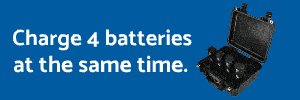I got my pilot license 30+ years ago, but I'm a newbie to drones.
In my research of drone models, I came across one specification description with an operating temperature of 32 to 100 degrees. Now in my world, colder temperatures typically mean better operating conditions... other than pesky freezing precipitation and it's a heck of a lot harder to start the engine.
So am I missing something here? Is there a problem unique to drones to flying in below freezing temperatures? I live in Iowa and winter is setting in... way too early for my liking.
I assume at the upper end of temperature range are the same problems for the rest of aviation (decreased performance) and battery stress.
In my research of drone models, I came across one specification description with an operating temperature of 32 to 100 degrees. Now in my world, colder temperatures typically mean better operating conditions... other than pesky freezing precipitation and it's a heck of a lot harder to start the engine.
So am I missing something here? Is there a problem unique to drones to flying in below freezing temperatures? I live in Iowa and winter is setting in... way too early for my liking.
I assume at the upper end of temperature range are the same problems for the rest of aviation (decreased performance) and battery stress.









